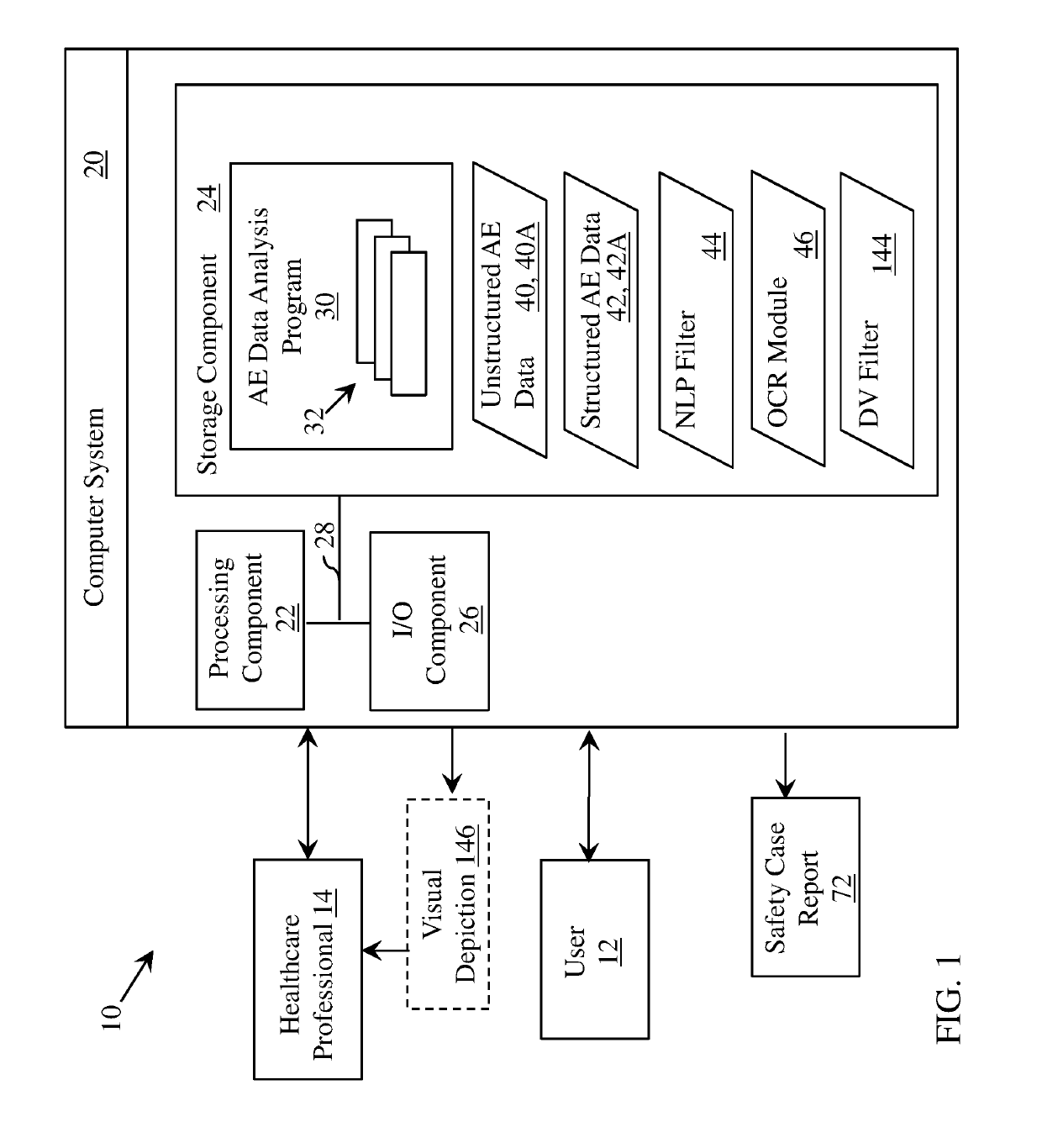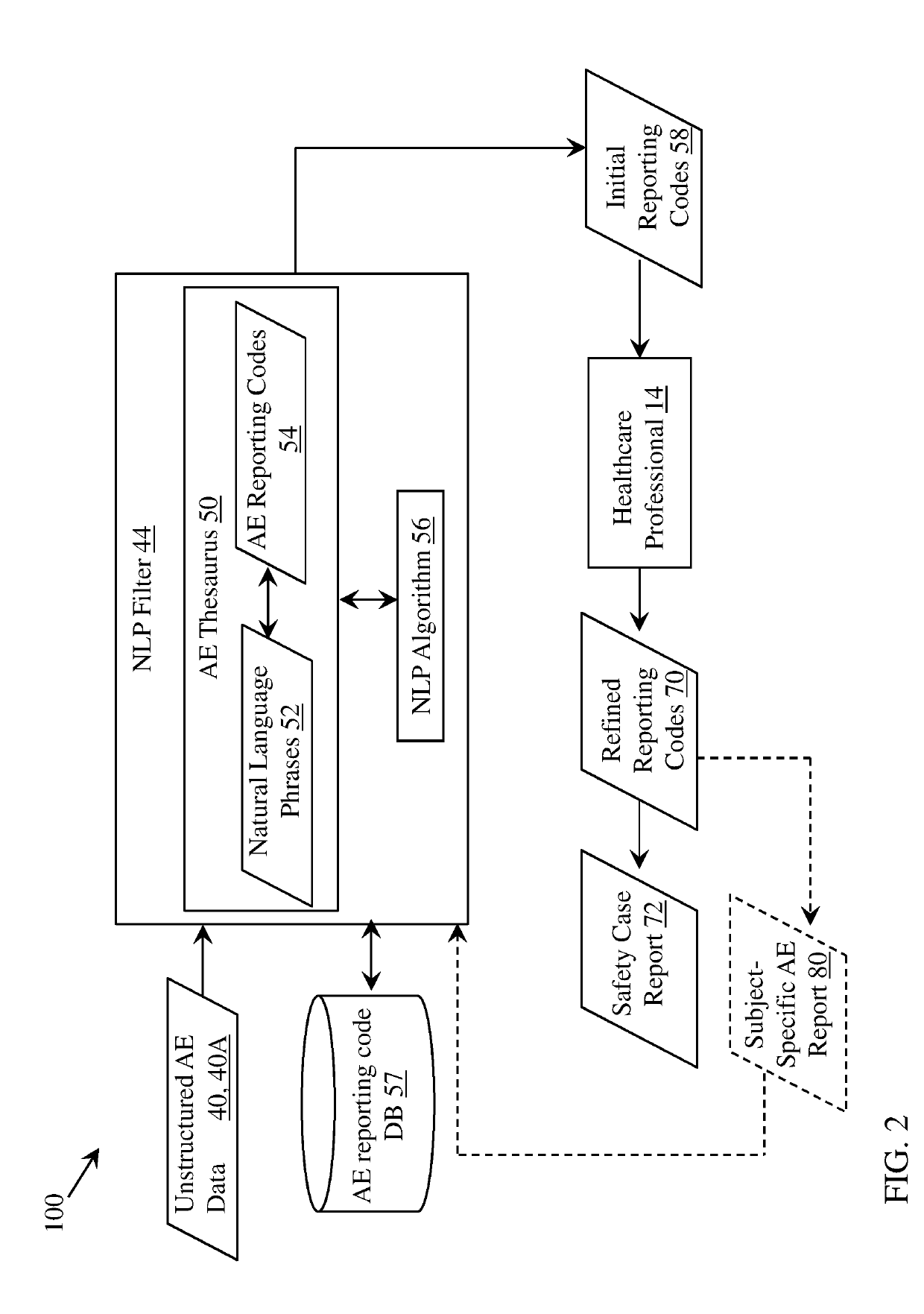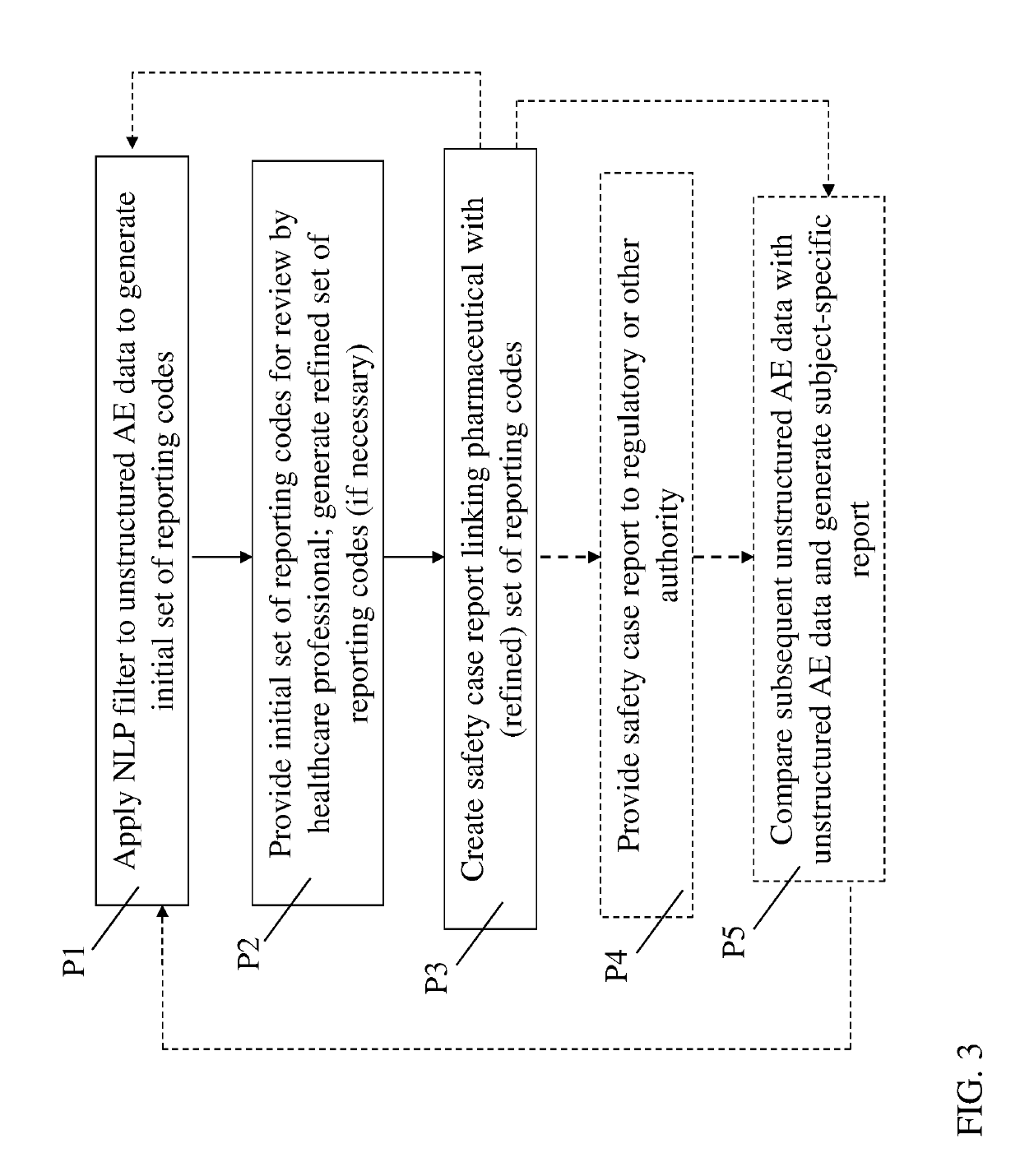Automated identification of potential drug safety events
a technology of drug safety and event detection, applied in the field of automated identification of potential drug safety events, can solve the problems of not being able to account for narrative-type data that does not, users applying such rules, and missing or otherwise discounting significant information about patient (subject) signs, symptoms, etc., and not being able to track individual patient progression over a period
- Summary
- Abstract
- Description
- Claims
- Application Information
AI Technical Summary
Benefits of technology
Problems solved by technology
Method used
Image
Examples
Embodiment Construction
[0030]This disclosure relates generally to pharmaceutical (drug), vaccine and / or medical device trial reporting. More particularly, various aspects of the disclosure relate to systems, computer program products, and methods for analyzing drug, vaccine and / or medical device trial data to detect drug, vaccine and / or medical device safety events (also known as adverse events, or AEs).
[0031]According to various embodiments, the processes, systems and computer program products described herein may be used in other systems, e.g., network analysis tools, or in other forms of data analysis and reporting. For example, the approaches described herein could be applied to any other medial implementation subject to regulatory approval and / or reporting (e.g., a vaccine or medical device such as an implantable device, wearable medical device or external medical device).
[0032]As noted herein, conventional approaches for processing reported AE data are prone to error, time-consuming and costly. Embo...
PUM
 Login to View More
Login to View More Abstract
Description
Claims
Application Information
 Login to View More
Login to View More - R&D
- Intellectual Property
- Life Sciences
- Materials
- Tech Scout
- Unparalleled Data Quality
- Higher Quality Content
- 60% Fewer Hallucinations
Browse by: Latest US Patents, China's latest patents, Technical Efficacy Thesaurus, Application Domain, Technology Topic, Popular Technical Reports.
© 2025 PatSnap. All rights reserved.Legal|Privacy policy|Modern Slavery Act Transparency Statement|Sitemap|About US| Contact US: help@patsnap.com



